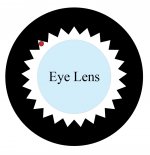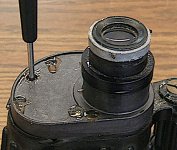Has anyone noticed that they may have a different diopter setting from one pair of binoculars to another, or is it just me?
Even within the same brand \ line of binocular I find slight differences. Of course there are build tolerances to take into account, so that could explain the slight difference. However, what is most curious to me, is that some diopters have me firmly in the + side (e.g. habichts) while others in the - side (zeiss dialyt & 8x25 victory). I'm usually about +/-.7 from the zero marking on all of them.
Overall this surprises me as Id expect consistency in this setting from experience with other types of optical devices that sell individual screw on diopter correction lenses, and one needs to know their Rx before ordering. Then again, i dont see why it should matter if the setting is easily adjustable like on a binocular. But to be on either side of zero?
Not really worried about anything, just curious and wondering if others might share their experience with this.
Only in certain settings does knowing your—at rest diopter settings—matter much. But you probably should know the difference between “setting zero diopters” and focusing your binocular. I have seen more than one Internet article on “setting zero diopters” that had NOTHING to do with setting zero diopters but which shows a slow-talking demonstrator extrapolating how to do what you have probably known how to do since childhood.
Let’s get to the brass tacks.
1) For many people, trying to match the optometrist’s prescription is an exercise in futility in that although it can make you feel warm and fuzzy it often relies on your brain and ciliary muscles to accommodate that setting. Also, that’s why prescriptions change. I’m pleased for those whose prescriptions never change and whose diopter settings remain constant. And, those folks are out there.
But, for the majority of observers, I will let my observation concerning diopter settings changing slightly day to day or hour to hour stand knowing medical science will back me up. This is especially true considering the effects of fatigue, sickness, stimulants, depressants, and other factors.
2) Many to most of today’s binoculars don’t have a way for the consumer to “set zero diopters,” even if he knew what to do and wanted to. It’s like the myriad Internet articles that tell the observer how to “collimate” his or her binocular when NONE get around to addressing the clinical activity rightfully called “collimation.”
3) For those with binos on which Zero diopters can actually be set, here is the procedure:
a) With an auxiliary telescope, focus on a collimator reticle or bright star (WHILE JUST STARING)—Jupiter and Saturn are not at infinity but their distance from earth is too far to walk. Take five readings on the auxiliary scope’s diopter ring. Throw out the highest reading, the lowest reading, and average the other three. Then, don’t mess with the aux scope anymore. Now, superimpose your binocular between your infinity target—collimator or celestial body—and the auxiliary telescope. Turn the binocular’s diopter ring until you get the sharpest image. This is zero diopters, which means nothing until you set the binocular’s diopter ring to zero and fasten it down.
b) If you are doing this for many older binoculars and some in production (the MTs and FMT Fujinons), you will be able to set zero diopters accurately. In the attached drawing you will see how most old military binos are set. Sometimes there is a pin protruding from the EP and the diopter ring and you just position the diopter rings accordingly. If the instrument has been repaired WITHOUT zero diopters being set, you may have to drill into the EP (slightly) to install a new pin. If you don’t want aluminum shavings between the field lens and the rear eyelens, you need to be very careful.
The second illustration shows a Swift Seahawk/Fujinon AR/Bushnell Navigator, etc (all the same) with a thin aluminum ring around the top of the EP. Often the diopter rings on these binos had to be broken away. When replaced, the new ring could be set to zero diopters and those three screws tightened to hold the ring in place.
In most cases, this has been useless information (my version of stacking BBs). I just wanted those who feel they have a need to know ... to know.
Also, some people worry about having their diopter settings fixed when one minute their target is 30 feet away and the next it 120 feet away. This concern is as irrelevant as it is intuitive. Once you have each eye focussed sharply, turning the center focus wheel is necessary to focus at various distances. However, your main concern is that the dioptric difference in your eyes stays the same at all distances. If setup correctly there will be no problem.
A client once told me she ALWAYS focused he right eye first, as it was her dominant eye and her optometrist said she should ALWAYS focus it first. I really hate having to follow a professional optometrist with a pooper scooper. But if you follow this advice, you might as well sell your Zeiss or Leica and by a bushel of TASCOs. Eye dominance is irrelevant! You focus a center-focus binocular IN THE ORDER IT WAS DESIGNED TO BE FOCUSSED. That is USUALLY—but not always—left side first.
:cat:
Cheers,
Bill
PS An important point that I left out and had to be reminded by Cory: use your dominant eye. The Internet can tell you how to figure that one out.







